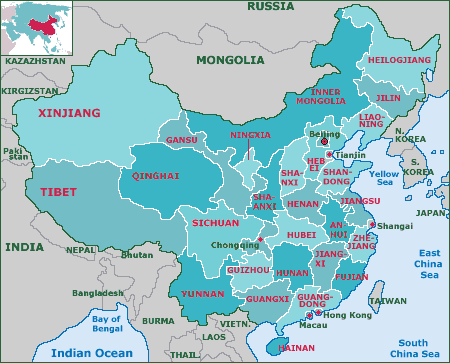The population developed in thousands of years customs which are absolutely unique. The typical Chinese house for example was a long succession of connected rooms, opening into a gallery. The walls were painted with bright colors and with figures representing flowers, birds, women, sentences of philosophers and poets. Windows were all to the south, and instead of glasses were closed by transparent paper, the doors and furniture precious and brightly colored.
Another unique feature of the Chinese human landscape was the Lantern. Traditionally there was a lantern before any house or shop. One of the main Chinese festivals, the day of the first moon, is also known as the Festival of Lanterns. All China is lit by lanterns, beautiful, elegant, of all colors, shapes and material, some as huge as rooms - inside which the Chinese shadow art is practiced.



